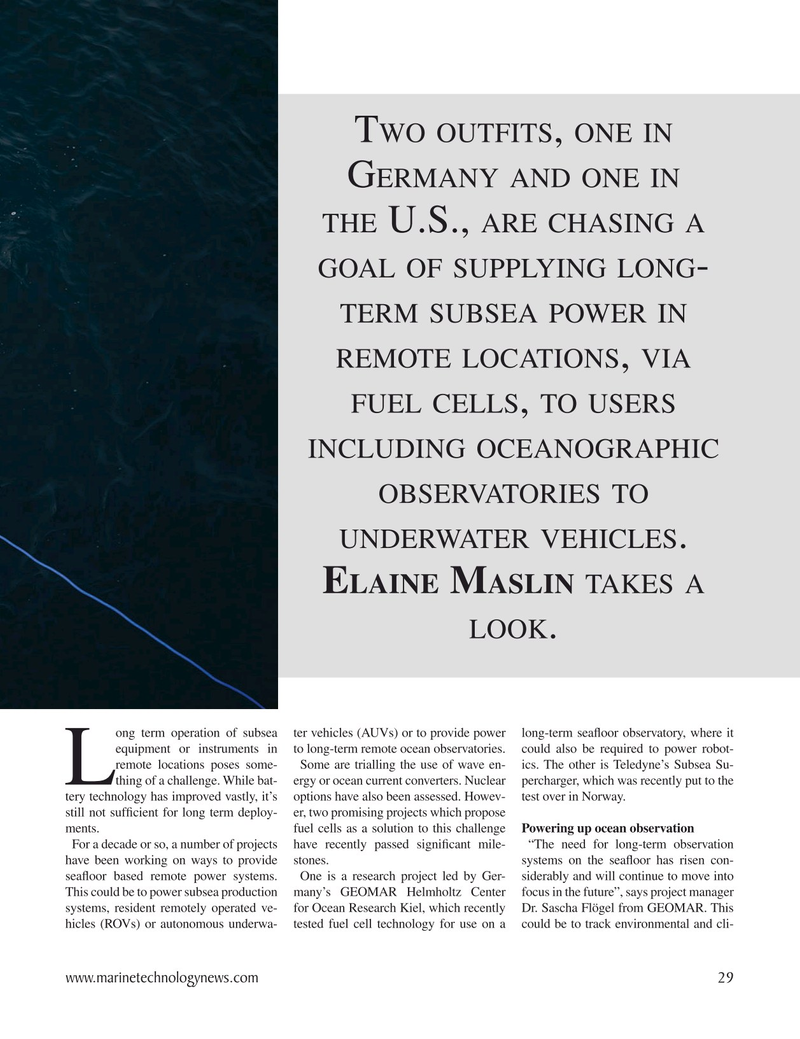
Page 29: of Marine Technology Magazine (March 2022)
Read this page in Pdf, Flash or Html5 edition of March 2022 Marine Technology Magazine
T , WO OUTFITS ONE IN
G ERMANY AND ONE IN
THE ARE CHASING A U.S.,
GOAL OF SUPPLYING LONG -
TERM SUBSEA POWER IN
REMOTE LOCATIONS VIA ,
FUEL CELLS TO USERS ,
INCLUDING OCEANOGRAPHIC
OBSERVATORIES TO
UNDERWATER VEHICLES .
E M LAINE ASLIN TAKES A
LOOK. ong term operation of subsea ter vehicles (AUVs) or to provide power long-term sea? oor observatory, where it equipment or instruments in to long-term remote ocean observatories. could also be required to power robot- remote locations poses some- Some are trialling the use of wave en- ics. The other is Teledyne’s Subsea Su-
Lthing of a challenge. While bat- ergy or ocean current converters. Nuclear percharger, which was recently put to the tery technology has improved vastly, it’s options have also been assessed. Howev- test over in Norway. still not suf? cient for long term deploy- er, two promising projects which propose ments. fuel cells as a solution to this challenge Powering up ocean observation
For a decade or so, a number of projects have recently passed signi? cant mile- “The need for long-term observation have been working on ways to provide stones. systems on the sea? oor has risen con- sea? oor based remote power systems. One is a research project led by Ger- siderably and will continue to move into
This could be to power subsea production many’s GEOMAR Helmholtz Center focus in the future”, says project manager systems, resident remotely operated ve- for Ocean Research Kiel, which recently Dr. Sascha Flögel from GEOMAR. This hicles (ROVs) or autonomous underwa- tested fuel cell technology for use on a could be to track environmental and cli- www.marinetechnologynews.com 29
MTR #3 (18-33).indd 29 2/25/2022 9:34:26 AM

 28
28

 30
30
